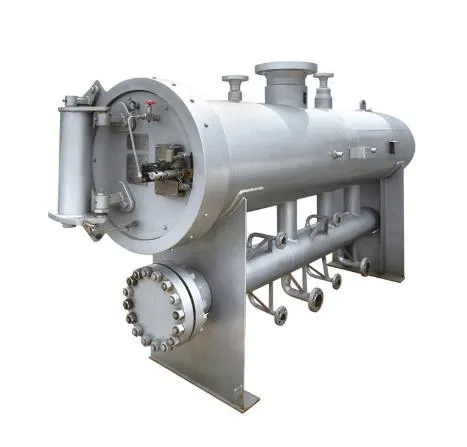
Nov . 29, 2024 16:00
Back to list
Optimizing Gas Systems with Gas Filters, Gas Pressure Regulators, and Gasifiers
When dealing with gas systems, whether for industrial use, home heating, or energy generation, the quality and control of the gas flow are crucial. Three key components that help optimize the performance, safety, and efficiency of gas systems are the gas filter, gas pressure regulator, and gasifier. In this article, we will explore the essential functions and benefits of each of these components, demonstrating how they contribute to cleaner, safer, and more efficient gas systems.

Why a Gas Filter is Essential for Clean and Safe Gas Flow
A gas filter is an integral component for ensuring that the gas flowing through your system remains free from contaminants. Whether you're using natural gas, propane, or industrial gases, impurities such as dust, moisture, and debris can damage equipment, reduce efficiency, and even pose safety risks. The gas filter works by removing these harmful particles, allowing only clean gas to enter the system. This not only extends the life of your equipment but also improves the overall performance of gas-powered systems. Installing a gas filter in your system helps prevent blockages, corrosion, and other costly issues, ensuring that your gas flows smoothly and safely.
How a Gas Pressure Regulator Controls Safe Gas Flow
The gas pressure regulator is responsible for maintaining a consistent and safe gas pressure within your system. Gas pressure can fluctuate depending on various factors such as temperature, gas volume, and supply conditions. Without a gas pressure regulator, these fluctuations could lead to inefficient performance or even hazardous conditions, such as gas leaks or equipment damage. By regulating the pressure and ensuring it stays within the optimal range, the gas pressure regulator ensures that appliances, machinery, and systems receive the correct pressure for safe and efficient operation. Whether you're managing a home heating system, industrial equipment, or a gas-powered generator, a gas pressure regulator is essential for smooth and safe functioning.
The Role of a Gasifier in Efficient Energy Production
A gasifier is a crucial component in the production of clean energy from solid fuels, such as biomass or coal. Unlike traditional combustion methods, a gasifier converts these materials into a clean, combustible gas through a process called gasification. The gas produced can be used for heating, electricity generation, or as fuel for various industrial applications. The gasifier significantly reduces emissions and increases energy efficiency by converting solid fuels into gases that burn cleaner and more efficiently. For industries seeking sustainable energy solutions or businesses looking to reduce their carbon footprint, a gasifier offers a reliable and eco-friendly alternative to traditional energy sources.
Combining Gas Filters and Gas Pressure Regulators for Optimal System Performance
The integration of a gas filter and a gas pressure regulator is essential for maintaining a smooth and efficient gas system. The gas filter ensures that only clean, contaminant-free gas enters your system, protecting vital components from damage and reducing maintenance costs. The gas pressure regulator, on the other hand, ensures that this clean gas is delivered at the correct pressure for optimal performance. Together, these components work in tandem to reduce system failures, increase efficiency, and extend the lifespan of equipment. Whether you're managing a commercial gas system or running industrial machinery, pairing a gas filter with a gas pressure regulator ensures that your system operates safely and at peak performance.
Why Gasifiers Are a Sustainable Energy Option for the Future
As the world moves towards more sustainable energy solutions, gasifiers are emerging as a powerful tool in the quest for cleaner energy. By converting organic materials like wood chips, agricultural waste, or even municipal solid waste into useful gas, gasifiers help reduce reliance on fossil fuels and minimize environmental impact. The gas produced can be used for a variety of purposes, from generating electricity to heating homes or powering industrial processes. For businesses looking to adopt greener practices or individuals seeking alternative energy solutions, a gasifier offers a practical and cost-effective way to reduce carbon emissions while generating reliable power. With its focus on sustainability and efficiency, the gasifier is a key player in the future of energy production.
In conclusion, whether you're concerned with ensuring the safety and cleanliness of your gas supply, controlling pressure for efficient performance, or seeking sustainable energy alternatives, components like the gas filter, gas pressure regulator, and gasifier are vital. By integrating these components into your gas systems, you can enjoy safer, more efficient operations and contribute to a greener, more sustainable future. These technologies not only enhance performance but also offer long-term cost savings and environmental benefits, making them essential investments for businesses and households alike.
Latest news
-
Safety Valve Spring-Loaded Design Overpressure ProtectionNewsJul.25,2025
-
Precision Voltage Regulator AC5 Accuracy Grade PerformanceNewsJul.25,2025
-
Natural Gas Pressure Regulating Skid Industrial Pipeline ApplicationsNewsJul.25,2025
-
Natural Gas Filter Stainless Steel Mesh Element DesignNewsJul.25,2025
-
Gas Pressure Regulator Valve Direct-Acting Spring-Loaded DesignNewsJul.25,2025
-
Decompression Equipment Multi-Stage Heat Exchange System DesignNewsJul.25,2025

